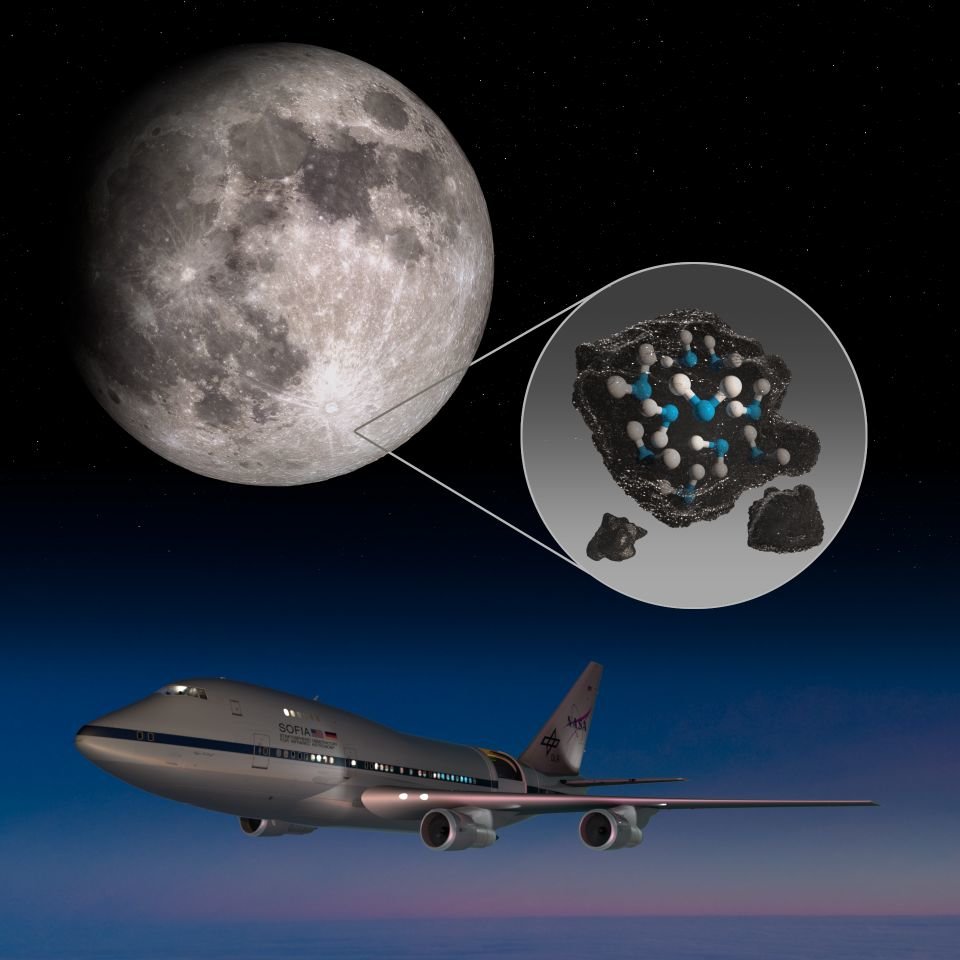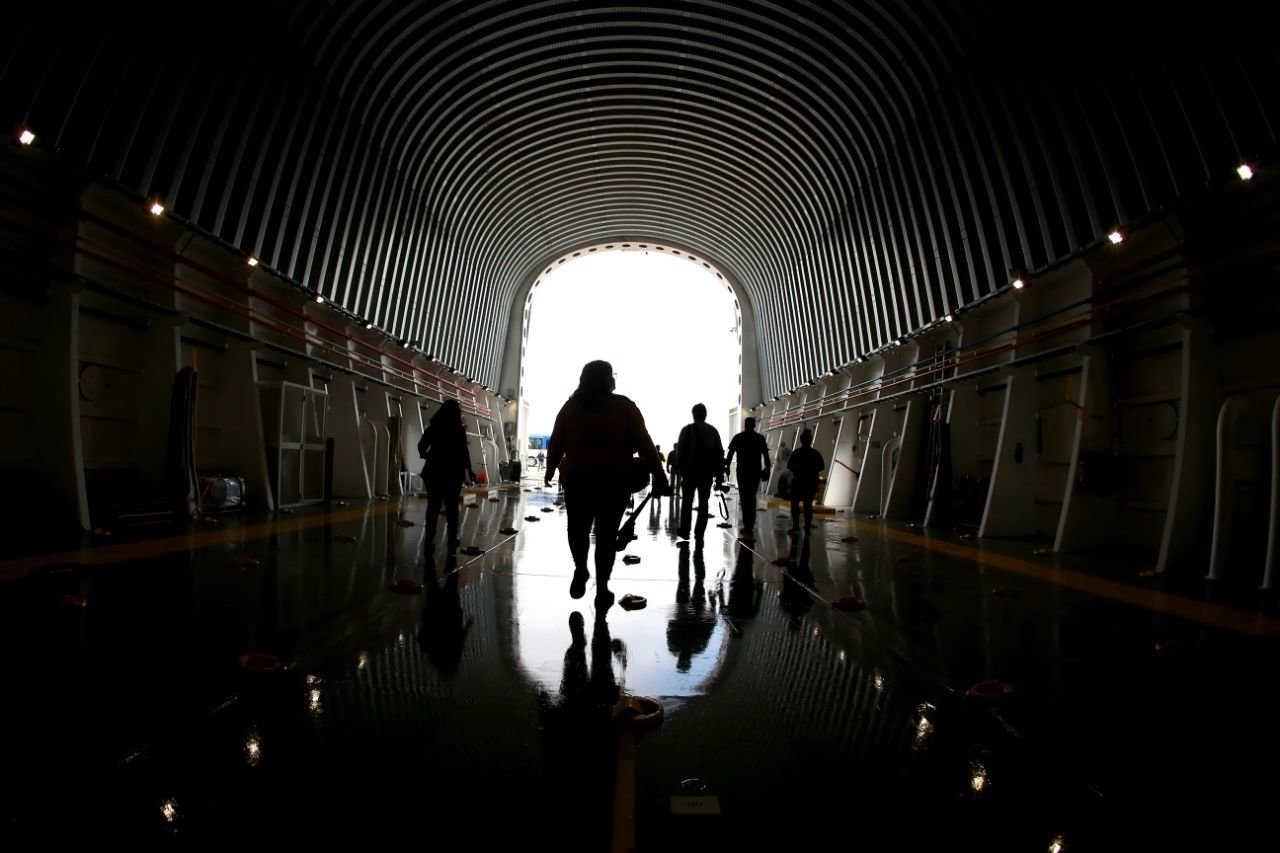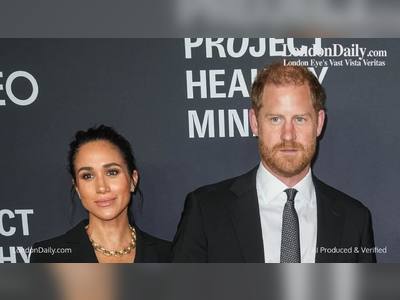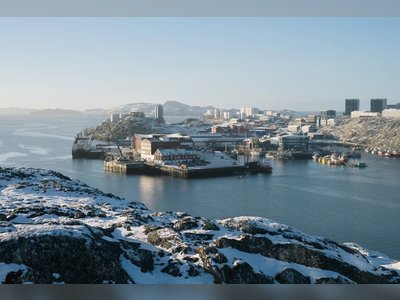
Nasa finds hidden pockets of water on the Moon in breakthrough for space exploration
Nasa has announced that water has been found in the sunlit surface of the Moon, in a breakthrough that could have huge implications for space exploration.
The discover of pockets of water in Clavius crater raises hopes for exploration – and even habitation – of the Moon, as astronauts may not need to carry water with them.

The announcement was based on data from the airborne observatory Sofia, a modified 747 carrying a large telescope.
Clavius crater, located in the Moon’s southern hemisphere. is one of the largest craters visible from Earth.
Previous observations of the Moon’s surface detected some form of hydrogen, but were unable to distinguish between water and its close chemical relative hydroxyl (OH).
New data revealed water in concentrations of 100 to 412 parts per million – roughly equivalent to a 350ml bottle of water – trapped in a cubic meter of soil spread across the lunar surface.
“We had indications that H2O, the familiar water we know, might be present on the sunlit side of the Moon,” said Paul Hertz, director of the Astrophysics Division in the Science Mission Directorate at Nasa HQ in Washington.
“Now we know it is there. This discovery challenges our understanding of the lunar surface and raises intriguing questions about resources relevant for deep space exploration.”
“The water we observed has two potential sources, either from the solar wind or micrometeorites,” said Nasa.
Jacob Bleacher, chief exploration scientist for the Human Exploration and Operations Mission Directorate at Nasa HQ, says the find is important for future space missions.
“Understanding where the water is will help us send astronauts to the Moon,” he said. “It's far easier to travel when you don't need to carry resources with you.
“If we can use the resources at the Moon, then we can carry less water and more equipment to help enable new scientific discoveries.”

Sofia, the world's largest airborne observatory, is a 747 that flies high in the atmosphere to provide its nearly 9-foot telescope with a clear view of the universe and objects in our solar system.
It flies above 99% of the obscuring water vapour in our atmosphere, and “sees” in infrared wavelengths.
The announcement comes as Nasa's Artemis programme aims to send the first woman and next man to the Moon's surface in 2024.
The agency last month revealed new details of its plan to put a woman on the moon by 2024, including the cost and planned landing site for the mission.
Nasa administrator Jim Bridenstine described the mission as “well within reach”, saying it is a first step toward’s America’s ambition of a manned mission to Mars.
Nasa estimates the cost of the mission at $28bn.

It would be the first time people have walked on the moon since the last Apollo moon mission in 1972.
Just 12 people have walked on the moon – all men.
Nasa flew six manned missions to the surface of the moon, beginning with Neil Armstrong and Buzz Aldrin in July 1969 and ending with Gene Cernan and Jack Schmitt in December 1972.
The mission will use Nasa’s powerful new the Space Launch System (SLS) rocket and the Orion spacecraft.
Nasa says the spacecraft is complete, while the core stage and its attached four engines are undergoing a final series of tests that will culminate in a critical hot fire test this autumn.
This is a breaking news story and will be updated shortly










